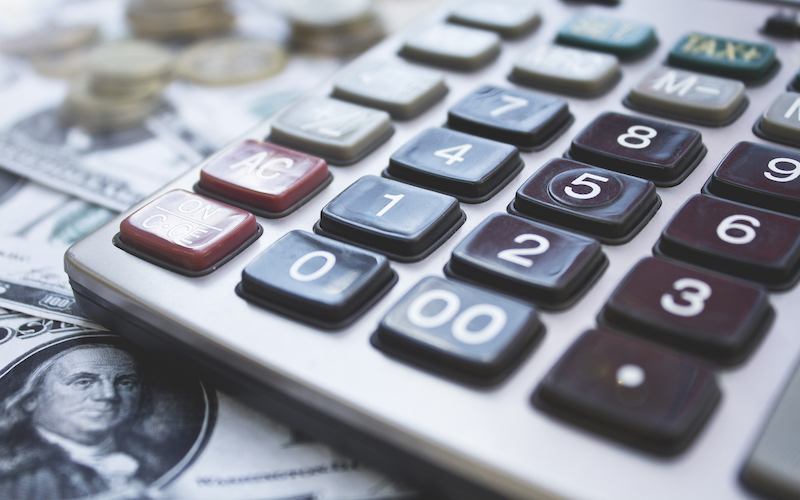
The lives saved by four more weeks of social distancing requirements outweigh the harms to the economy.
Remarkably, just as the coronavirus pandemic appears to have reached its peak in New York, government officials have begun to plan for the lifting of social-distancing requirements. Anthony Fauci, Director of the National Institute of Allergy and Infectious Diseases, noted on April 8 that, “if in fact we are successful, it makes sense to at least plan what a re-entry into normality would look like.”
Two days later, President Donald J. Trump announced that he would create an advisory group to recommend measures for reopening the economy. Peter Navarro, President Trump’s trade advisor, warned that continued economic disruption could kill more people than the virus.
Around the world, governments are relaxing strict social distancing requirements. China has already begun lifting restrictions in Wuhan. Italy, the Czech Republic, and other European countries are making plans to ease restrictions as well. And now the President of the United States has released his own Administration’s guidance on reopening the economy.
But no one in the Trump Administration has explained how officials balance the public health benefits of the restrictions against the costs of economic disruption. Asked on April 10 what metrics he would use in making a decision to lift social distancing, President Trump pointed at his forehead and said, “The metrics right here, that’s my metrics.”
President Trump faces intense pressure from some corporate executives to lift restrictions as soon as possible. These executives point to skyrocketing joblessness and a coming tsunami of bankruptcies. But top public health officials insist that premature lifting of restrictions will produce another wave of contagion. What metric can one use to trade off human lives and economic misery?
The answer is cost-benefit analysis, the method the government normally uses for making such tradeoffs. And cost-benefit analysis gives a reasonably clear answer: hold off. A month more of restrictions is needed, at least, followed by a gradual lifting of the restrictions if the pandemic eases off as predicted.
Our estimate uses the most recent government model of the pandemic. The model estimates that extending shelter-in-place orders for another 30 days, followed by a period of mitigated restrictions—with more people working but still 25 percent working from home—would save 100,000 lives, 85,000 of them being people over the age of 65.
To conduct a cost-benefit analysis, one must convert these 100,000 lives saved into a dollar value. The government uses a number called the “value of a statistical life” (VSL). The VSL is derived by asking how much people pay to avoid small risks of death—for example, by buying safety equipment or avoiding a dangerous job. Thus, individuals themselves decide how much they value their own safety, and the government takes their decisions at face value.
When the government issues regulations addressing pollution, for example, it uses the VSL to evaluate how much economic harm is justified by regulations that reduce pollution-caused mortality. The same method seems appropriate when regulations restrict economic activity to save lives from illness. Indeed, a little-noticed government report on the risks of flu pandemics published last fall did just that.
We use a VSL of $11.5 million, which we borrow from economists Michael Greenstone and Vishan Nigam, who in turn use the U.S. Environmental Protection Agency’s number from a few years back, updated for inflation and related factors. That number suggests that another month of restrictions would create $1.15 trillion in benefits. Greenstone and Nigam adjust the VSL downward to reflect that most people who will be saved are the elderly and thus presumably are willing to pay less to reduce the risk of mortality by a small amount. Using their methodology, the monetary benefit of restrictions is $407 billion.
The economic cost of a month of restrictions is the loss of productive activity throughout the economy. The economist Casey Mulligan recently estimated that cost based on empirical studies of the effect of variation in the number of work days every year. According to Mulligan, restrictions cost $4.4 trillion per year, or $84.6 billion per week.
For a month-long shutdown, Mulligan’s cost estimate suggests about $367 billion. These costs are less than the benefits of continuing the lockdown for another 30 days, regardless of whether one adjusts the VSL for the fact that mostly older people will die from COVID-19. Even if Greenstone and Nigam are correct that it is appropriate to adjust the VSL by age, governments should not consider lifting stay-at-home orders until May, and even after that point some restrictions should remain in place. Of course, with more information about the disease’s progress in a month’s time, a new cost-benefit analysis may suggest that the restrictions should be extended further.
These numbers are obviously contestable. The VSL remains controversial because of worries that people who buy safety equipment to reduce risks or accept dangerous jobs for higher wages do not really understand the risks that they take. And it is debatable whether the VSL should be adjusted by age. Restrictions that suppress the contagion provide other benefits as well—avoided medical costs, for example, which are considerable although dwarfed by the value of statistical lives saved.
The cost numbers can also be challenged. It is possible that the economy will adjust more rapidly than Mulligan assumes as people shift to Zoom video conferencing and learn to work from home. Or it is also possible that the economy will remain flat even if restrictions are lifted because people will continue to refuse to leave their homes out of fear of infection. In either case—or in both cases—the economic cost of restrictions would be lower than Mulligan estimates. But it is also possible that the shock caused by continuing restrictions on economic activity will send the economy into a lengthy depression, in which case Mulligan’s numbers are too rosy.
And yet for all that, there is no alternative to counting up costs and benefits as rigorously and transparently as possible. Epidemiological models help us predict the effects of different suppression policies, but they provide no basis for evaluating their social costs and benefits. Writing in the New York Times, Gabriel Leung, an epidemiologist, observes that as governments relax lockdowns, they need some way to balance the tradeoffs between lives saved and economic harms. But Leung is only able to suggest that “each community must determine the real-time effective reproductive number it can accept given its own circumstances.” That is not really any guidance for communities that want to do the right thing.
Writing in The Atlantic, Zeynep Tufekci of the University of North Carolina at Chapel Hill suggests that the government should eliminate the very worst-case scenarios. This reasoning seems sensible on its face. But how far should we go to eliminate the worst-case scenarios? Should the government separate parents from their children if one or the other becomes ill? Ban people from leaving their homes for any reason?
On his blog, economist Robert Stavins advocates the use of “cost-effectiveness analysis.” Under cost-effectiveness analysis, the policymaker picks an objective—for instance, ensuring that no more than 100,000 Americans die of COVID-19—and then chooses the policy that will achieve that objective at the lowest cost. But how should the policymaker choose the objective in the first place? Without information about costs and benefits, one cannot determine whether the stated objective is wildly unrealistic, because it is far too costly, or absurdly cautious, because it is not costly at all.
A more elaborate cost-benefit analysis could address the uncertainties described above, and someone in government should conduct such an analysis. But it would not likely change our conclusion that the restrictions should be kept in place for at least four more weeks. The avoidance of 100,000 deaths would be a massive benefit for society, even though most of the costs are more speculative. If President Trump and the governors succumb to political pressure to lift the restrictions too soon, they should be held accountable for the consequences.
This essay is part of a series entitled Analyzing COVID-19 Policymaking.





